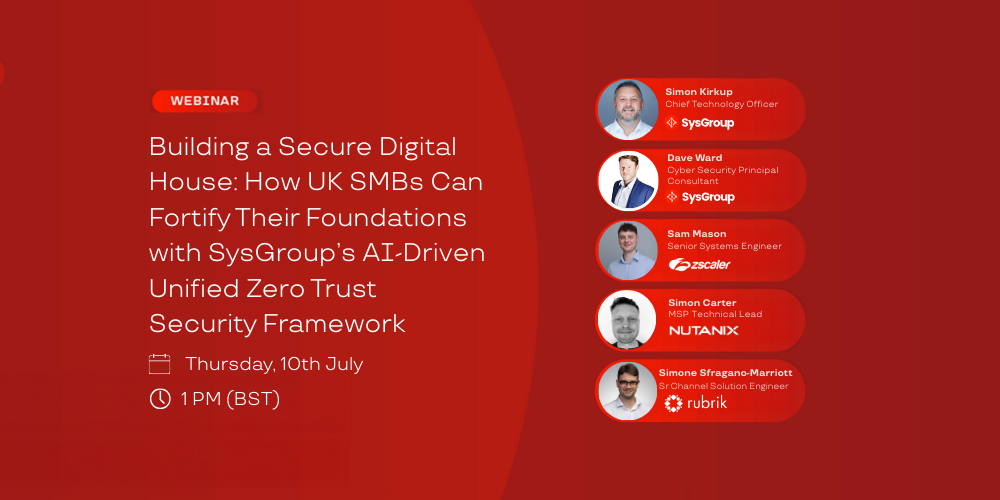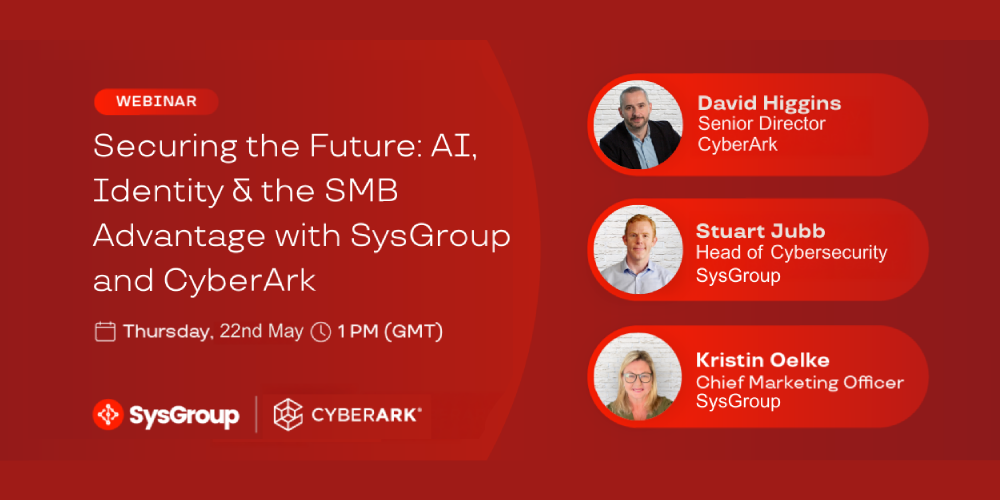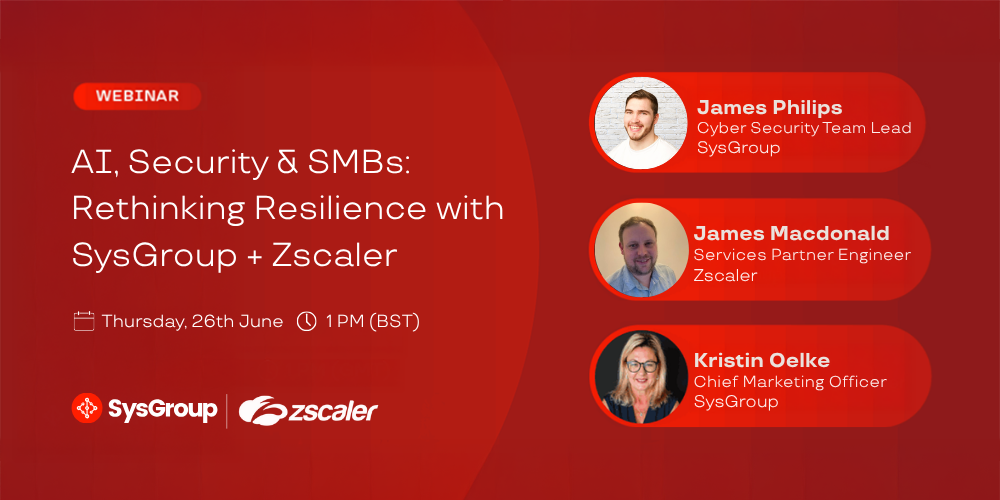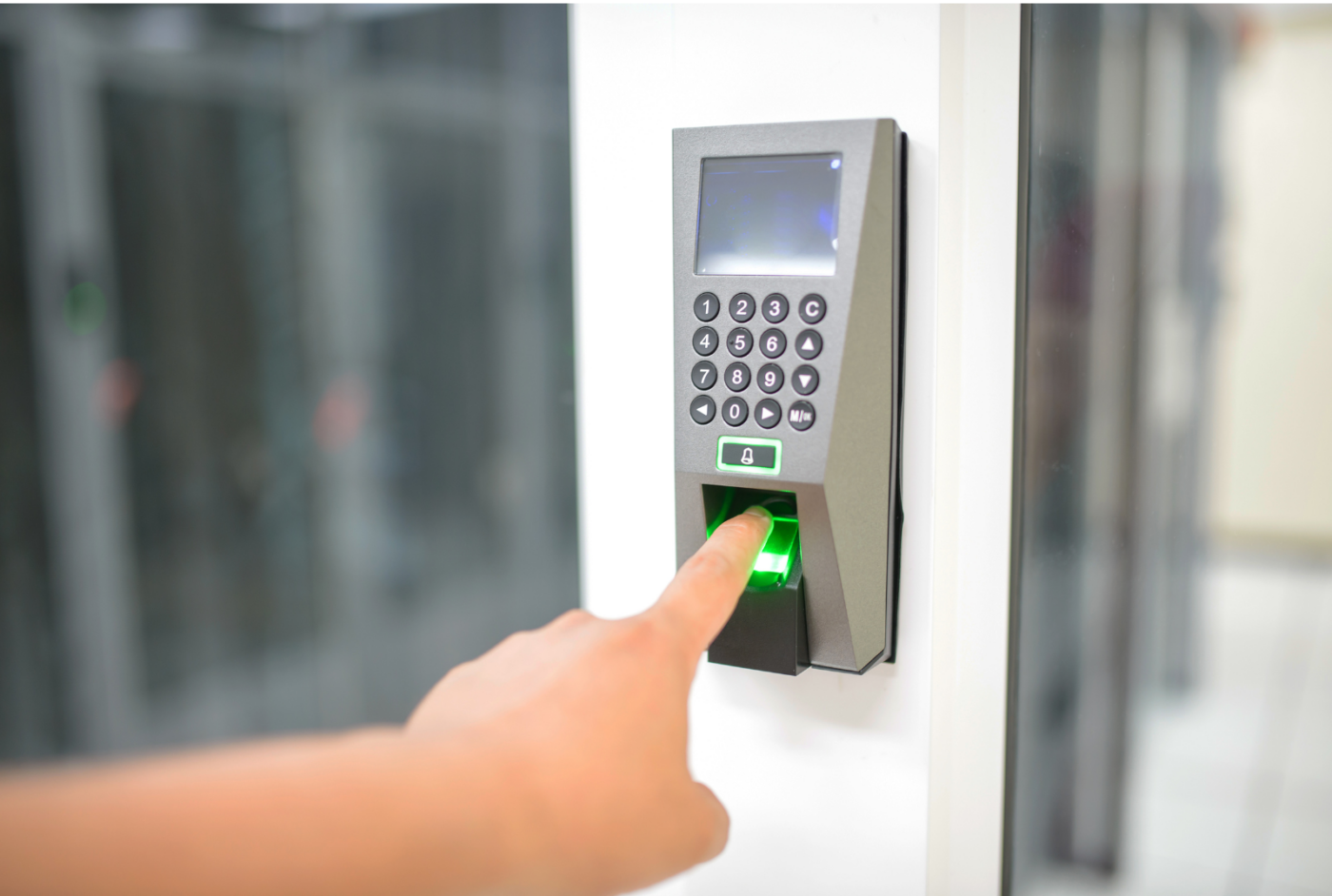Sys Workshop
Microsoft 365 Licensing Changes 2025: How SMEs Can Solve Rising Costs
Microsoft 365 Licensing Changes 2025: How SMEs Can Solve Rising Costs
Thought leadership
Jaguar Land Rover Cyberattack: Lessons for Every Business
Jaguar Land Rover’s 2025 cyberattack shut down global operations. Learn what happened and how businesses can strengthen cybersecurity and resilience.
Thought leadership
Cyber Resilience: Why UK SMBs Can’t Afford to Ignore Testing and Awareness
A surge in high-profile UK cyberattacks has made one thing clear: prevention alone isn’t enough. This post explores why regular testing and resilience planning are essential for SMBs to stay secure.
Sys Webinar
Building a Secure Digital House: Practical Takeaways for UK SMBs
n this on-demand webinar, industry experts share how UK SMBs are securing their digital foundations with Zero Trust, automation, and modern infrastructure strategies. Whether you’re starting your security transformation or simplifying what you already have, this session offers practical guidance and proven real-world outcomes.
Sys Webinar
AI, Security & SMBs: Rethinking Resilience with SysGroup+Zscaler
This exclusive webinar explores how SMBs can simplify their Zero Trust journey and strengthen cybersecurity by leveraging AI-driven threat detection, adaptive access controls, and platform-based security architecture.
Thought leadership
Think Like a Burglar: Why Most UK Businesses Are Easy Targets for Cybercrime
As cyber attacks surge across the UK—especially targeting small and mid-sized organisations—it’s more important than ever to think...
Thought leadership
Under Siege: Why Your Digital House Needs Better Locks, Walls, and Vaults
If your organisation’s cybersecurity feels like it’s always one step behind, you’re not alone. But it doesn’t have...
Sys Webinar
Smarter Infrastructure Starts Here: AI-Powered IT Operations with Nutanix
In this exclusive session, discover how Nutanix Cloud Manager enables a smarter, more proactive approach—bringing AI-driven clarity and control to your hybrid or multi-cloud environment.
Sys Webinar
Securing the Future: AI, Identity & the SMB Advantage with SysGroup + CyberArk
In this on-demand webinar, discover how SysGroup and CyberArk are redefining identity security. Our experts explored how AI-driven IAM strategies can strengthen your security posture, reduce manual overhead, and deliver true least-privilege access—at scale.










